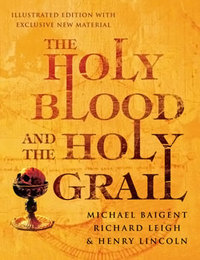#TheHolyBloodAndTheHolyGrail
The Holy Blood and the Holy Grail
The Holy Blood and the Holy Grail (retitled Holy Blood, Holy Grail in the United States) is a book by Michael Baigent, Richard Leigh and Henry Lincoln.The book was first published in 1982 by Jonathan Cape in London, as an unofficial follow-up to
Read More..
by Michael Baigent, Richard Leigh, and Henry Lincoln
Ratings
Likes
Reviews
Popularity
Ranks
This #hashtag is not ranked yet.

